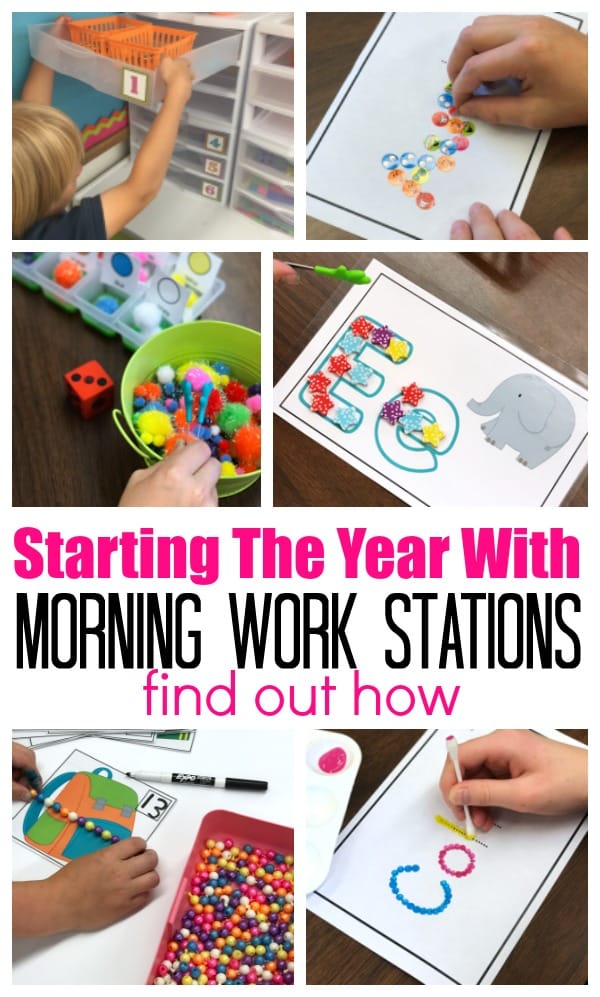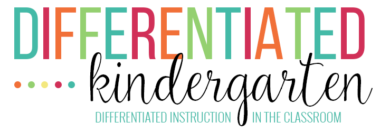I can’t remember when I started using locks and keys in my classroom. I just know that my kindergarten friends had an obsession with them that I needed to acknowledge and use that obsession to my advantage. They have since become a favorite instructional tool that provides both engagement and invaluable fine motor practice.

GETTING STARTED
Like any other tool you are going to use in your classroom before you expect your students to use locks and keys in an ‘academic way,’ you need to give them time to explore and, dare I say, play a bit with them. Kindergarten students love the feel of different shapes and sizes of keys. They are heavy and the keys are different shapes and sizes. This is interesting and engaging and fun for them. So before you ‘do’ anything with keys, gather up what you have and let your students play with them.

During this time, they’ll get a chance to figure out how to gently push a key in the hole and twist the key to make the lock pop open. Yes, this takes practice. Many of them will never have used a lock and key before, but allowing them to do so will make them feel important and grown up and they’re gonna love it.
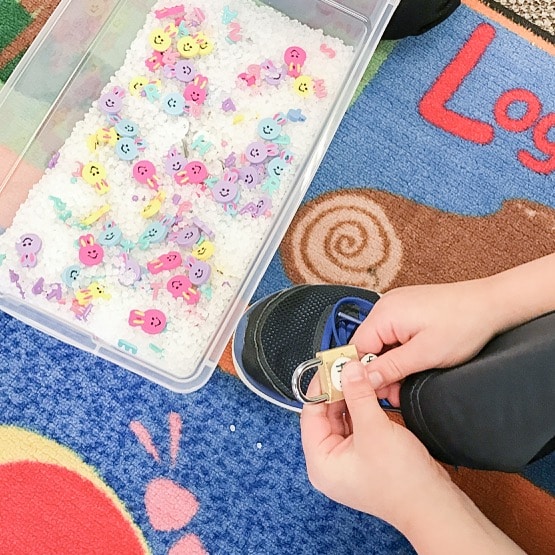
This is also the time, especially if you use these in a sensory bin, to train them to push the lock back together before it goes back into the bin. That way, no items get stuck in the apparatus. I’ve dug out my fair share the first couple weeks of school to know that this is an important skill to practice.
ACTIVITIES TO SUPPORT LEARNING

One of the reasons that I like using locks and keys so much as a teacher is that they can be made into self-correcting activities that are super simple to differentiate. The key (no pun intended) is in the key fob if you’re using just regular, whatever you can find padlocks.
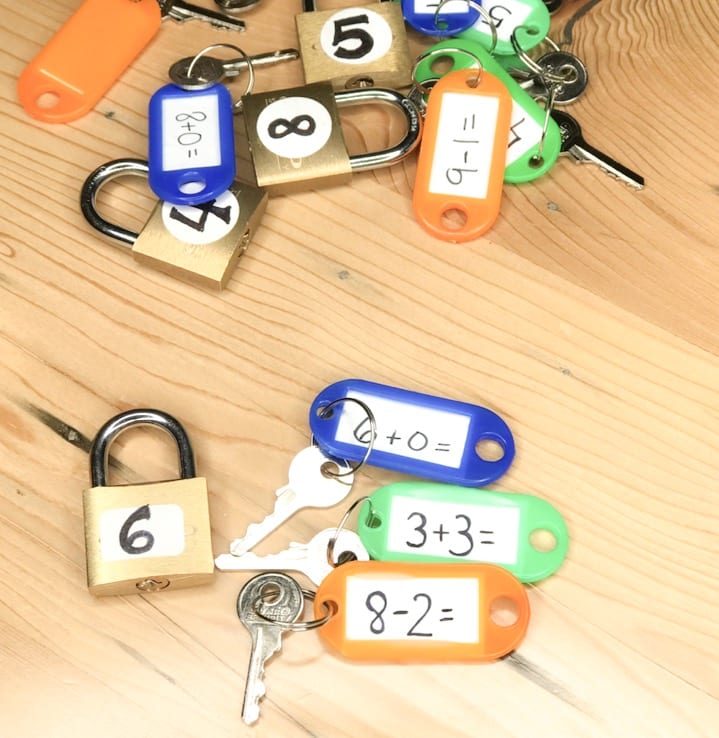
Because these keys generally come with a backup set (or two) of keys, you can easily have two or three keys that will open one lock. So if you label your lock with a number 5 for example, you could have one key that had an addition problem through 5, another key that had addition through 10 and another that had subtraction through 5. The skills would depend entirely on whatever the needs of your students are at the time.

I recently found these colored keys and they can also function as a means of differentiating.
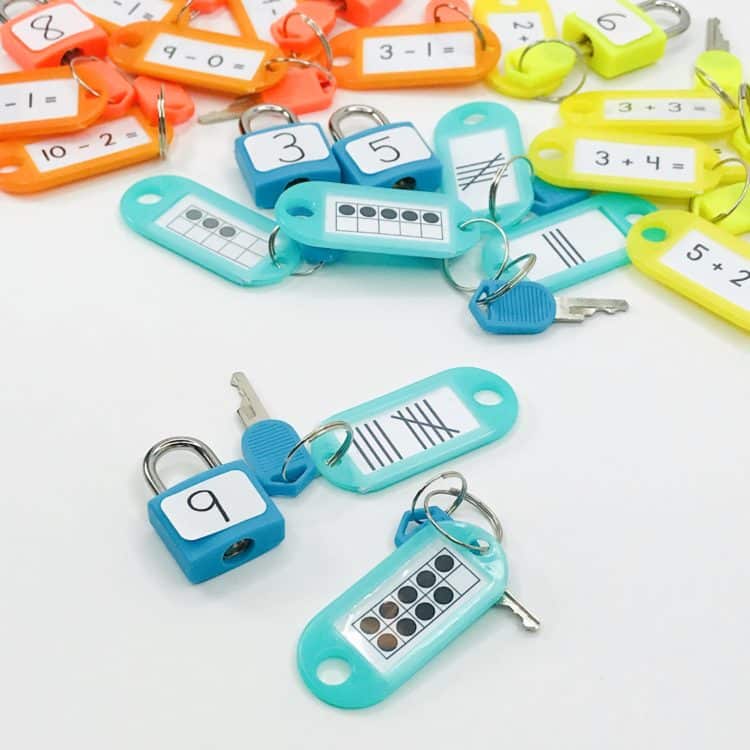
My blue keys have students matching ten frames to numbers. My yellow keys and locks address addition through 5.

And my orange keys address subtraction.
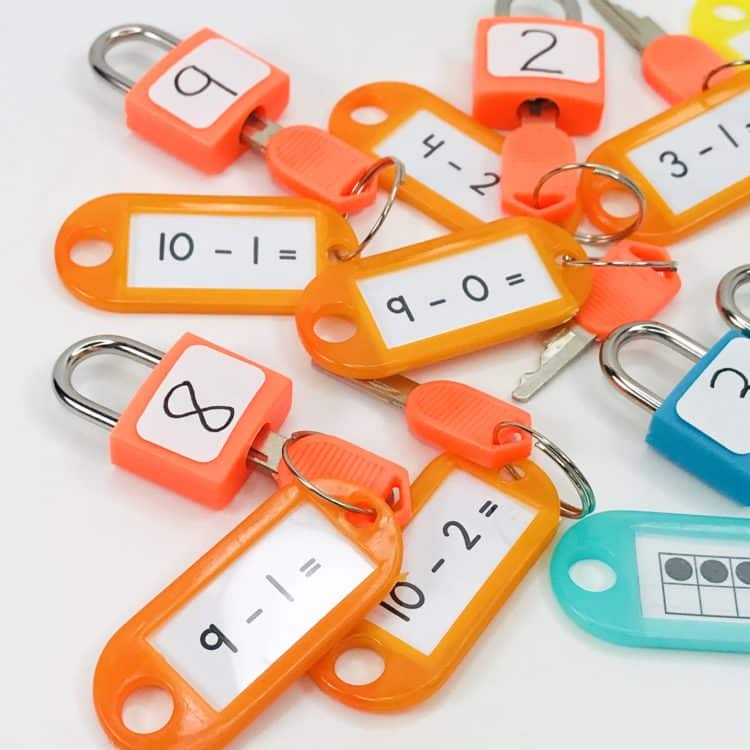
All the keys can go into a sensory bin. Students use the color that applies to their group.

And yes, you can make it work for literacy skills as well.
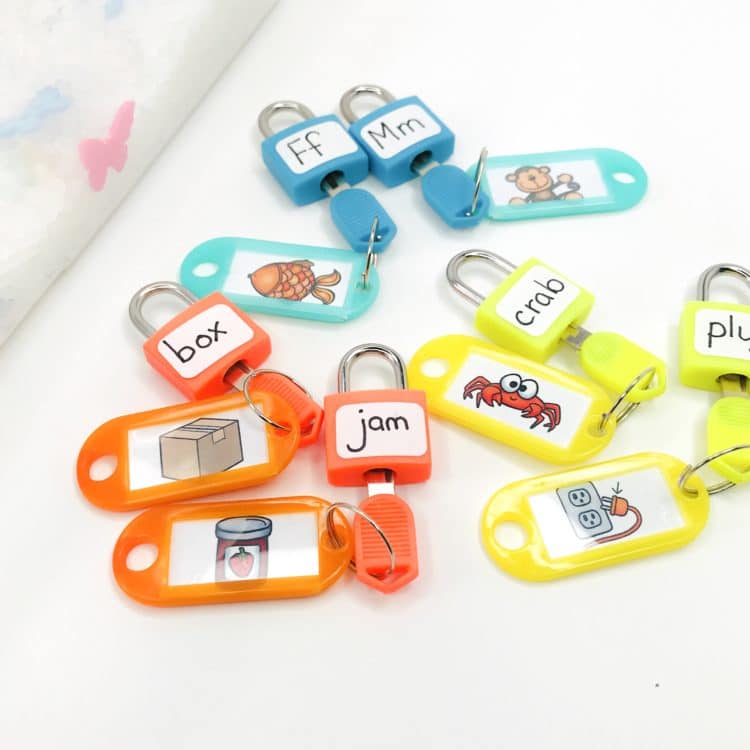
For this set, I had pictures printed off on the little pieces of paper and slipped those into the key fobs. Blue was matching letters to beginning sounds. Orange match cvc words to pictures and yellow matched blends to pictures. All the keys can go into the sensory bins at the same time and students will know exactly which keys they should use. Sometimes my students will ask, ” . . . if I finish my colored keys, can I work on the others . . . absolutely. But they finish their colored keys first.”
ADDING A SENSORY ELEMENT
Do you have to add a sensory element to this activity? No! But if you can, why not. In fact, not only do I throw these into a sensory tub, but I also require my students to search for the keys and locks using tongs. I am always looking to add that fine motor element when I can.

Get creative with your sensory tubs.
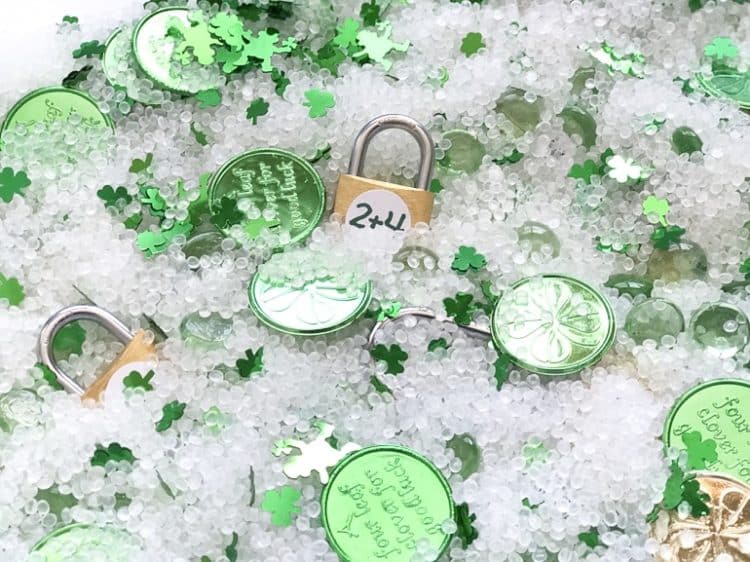
For keys and locks, I tend to use the same two bins (one for math and one for literacy) and use polypropylene beads in both because it is easy to remove and add new thematic elements to make it engaging each month.
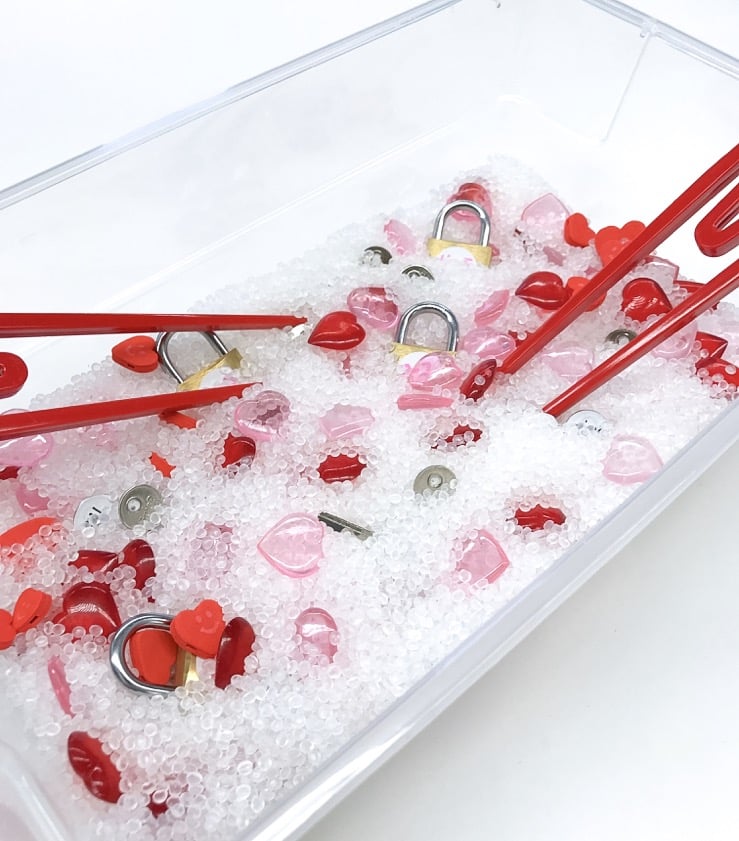
SUPPLIES
This post does contain some affiliate links for your shopping convenience. I do receive a small commission when someone purchases an item after clicking on a link. These commissions help with the cost of maintaining this blog and allow me to continue bringing you valuable content, activities, and ideas.
There is a bit of a trick to finding locks and keys that will work as self-correcting skill practice. And quite honestly, it’s been a bit of work in progress . . . finding the right system to make them work the most efficiently in my classroom. It has taken some time to figure it all out.
First of all, you just can’t go out and buy a ‘lot’ of keys. What I mean by that is you can’t buy a package of, let’s say 12, locks and keys because, more likely than not, they will all be keyed the same. That means it won’t matter which key you use or which lock, they will all open the same.

When I first started using locks and keys, I didn’t really know what I was doing. I hadn’t even discovered the beauty of key fobs back then. I would scour the discount stores in my little hometown to find cheap, individually packeted ones. Then I would stand there and compare the keys to make sure they were all different. That’s one way to get them differently keyed. The other way is to ask parents if they have any padlocks that aren’t being used lying around that they might donate . . . or put padlocks on your ‘wish list’ for the holidays or back to school. If you explain to your parents what you are hoping to accomplish, they are usually eager to help you find what you need for your classroom.
Then, of course, I discovered the beauty of key fobs and how much easier they made my teacher life. I purchased a bunch of colored ones to make tiering super simple.
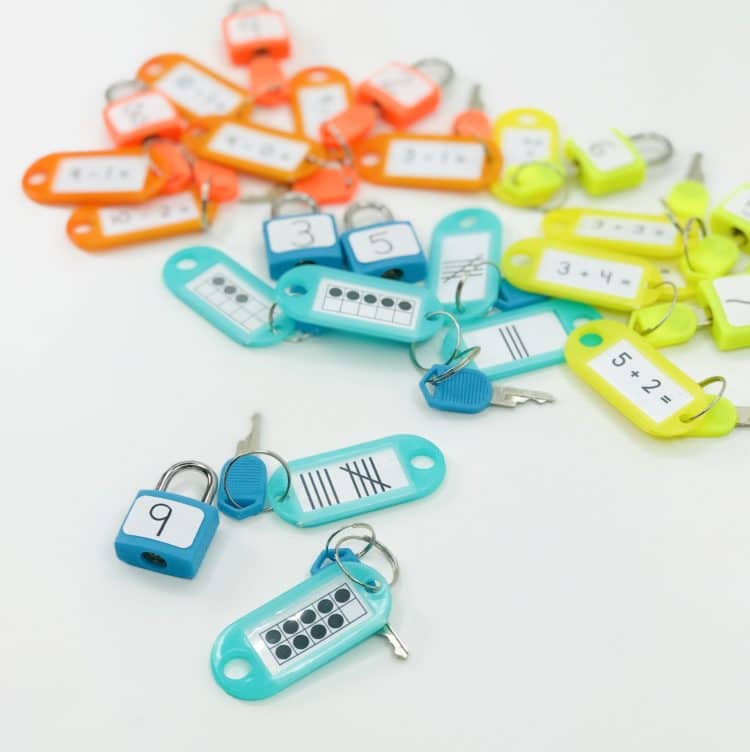
Finally, I did recently stumble across these colored locks and keys that come in a lot and are differently keyed. So no two yellow locks and keys are the same. However, if you purchase 8 yellow and 8 blue, a blue may open a yellow or vice versa. But I love these little colored locks because they make it easy to differentiate just by putting different skills on different colors.
So all the matching ten frames to numbers might be on blue keys/locks and the addition ones on yellow and the subtraction ones on orange. All the keys can go in the sensory bin at the same time, but students only use their designated color to practice the skill appropriate for them.
WHERE YOU CAN GET YOURS
Just click on the items below if you’re interested in seeing where I got everything:
- Avery small rectangular stickers
- Colored key fobs
- Small colored lot of locks and keys
- Polypropelene beads for sensory bins
Yes, there are locks and keys that are already premade with different skills that you can purchase from Amazon. You can find an alphabet version HERE or click the picture below.
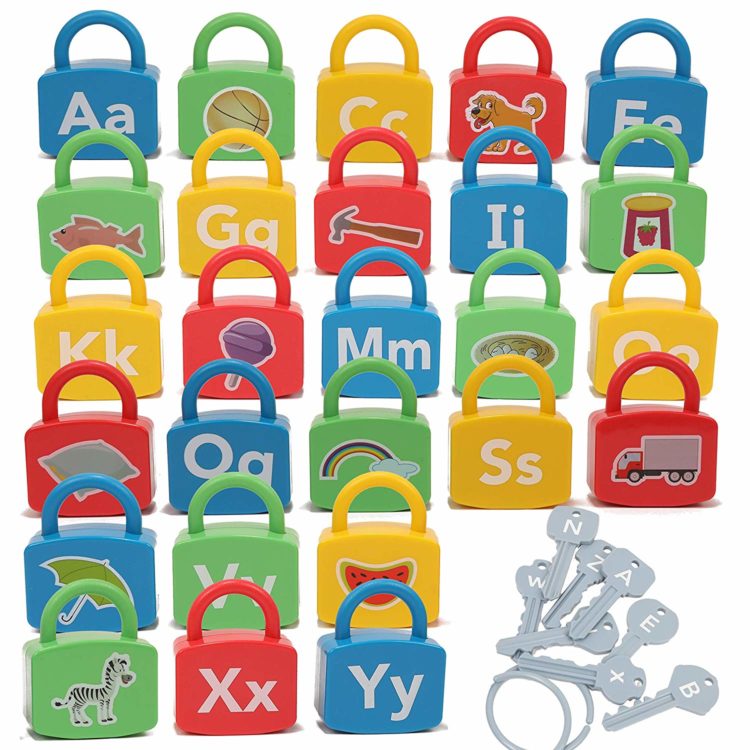
And they also have a numbers version HERE.
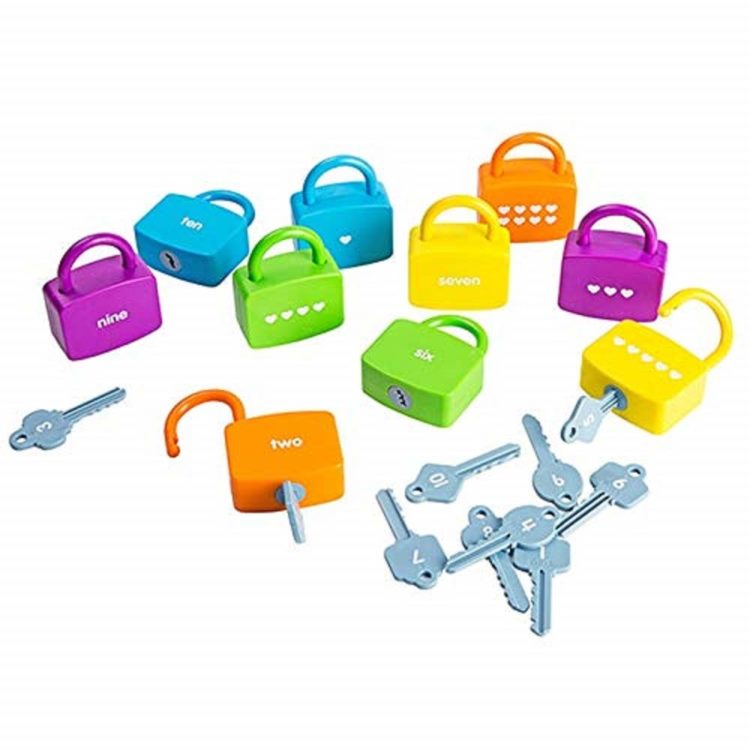
I personally have never used these, but they seem to have good reviews from folks who have purchased them, so you can definitely check them out HERE.
FREE TEMPLATE
If you decide you’d like to try using keys in your own classroom but need a template for printing your skills on key fobs, I have included a super simple, nothing fancy template HERE or the picture below. It’s just the sized boxes in a powerpoint document but you’re welcome to use them to add your own addition problems or graphics or whatever you’d like. Just click and it will take you to a Google doc.
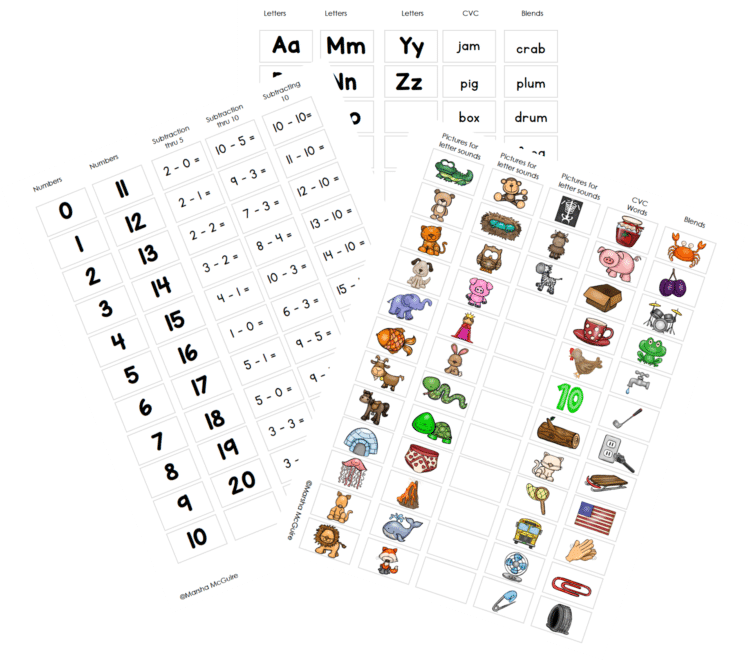
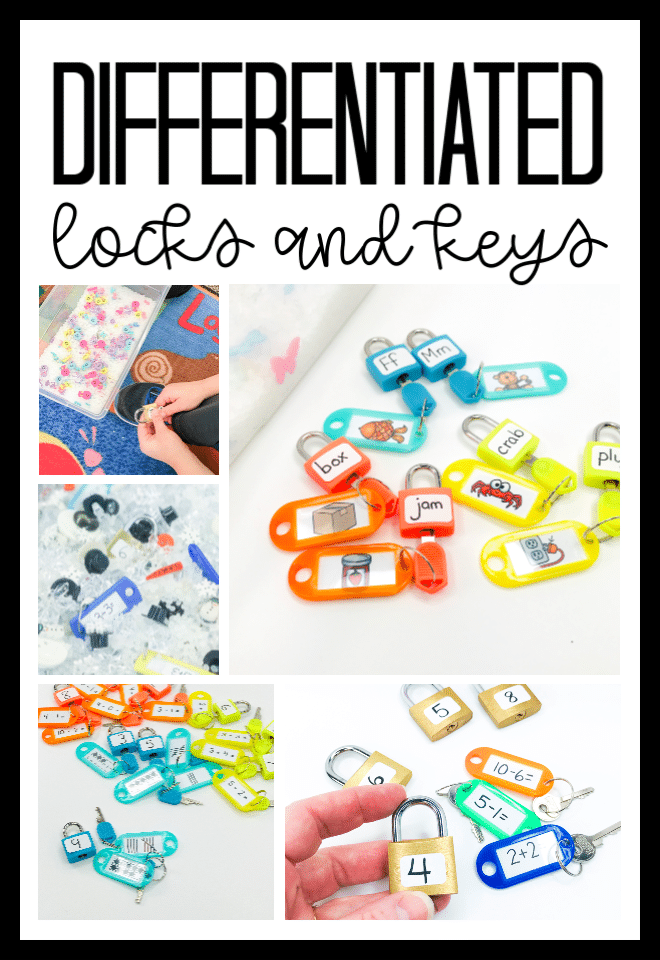
GREAT FINE MOTOR RESOURCES
If you’re looking for fine motor activities that support learning, check out my Morning Work Stations by clicking on the picture below.
